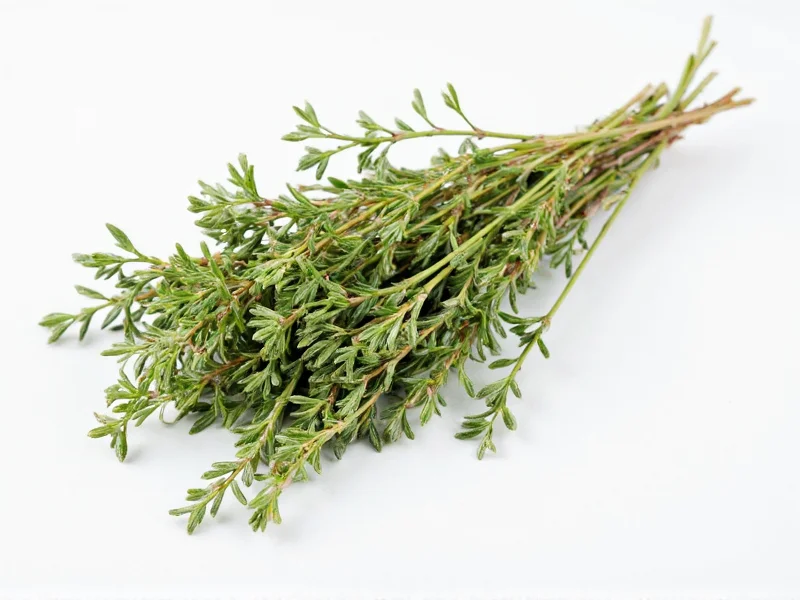Understanding herb conversions is crucial for home cooks and professional chefs alike. When recipes call for fresh thyme but you only have dried thyme available (or vice versa), knowing the proper measurement conversion ensures your dishes maintain their intended flavor profile without becoming overpowering or bland.
The Science Behind Fresh to Dried Herb Conversion
Fresh herbs contain significant moisture that evaporates during the drying process, concentrating their essential oils and flavors. This concentration means you need less dried herb to achieve similar flavor intensity as fresh. The standard culinary guideline follows a 3:1 ratio—three parts fresh herb equals one part dried herb.
When measuring thyme specifically, a single sprig typically yields about 1/4 to 1/2 teaspoon of fresh leaves, depending on the size and leaf density. Three medium-sized sprigs generally provide 3/4 to 1 1/2 teaspoons of fresh thyme leaves, which converts to 1/4 to 1/2 teaspoon of dried thyme. For practical cooking purposes, the standard conversion simplifies to 3 sprigs fresh = 1 teaspoon dried.
Thyme Measurement Conversion Reference
| Fresh Thyme | Dried Thyme | Equivalent Measurement |
|---|---|---|
| 1 sprig | 1/4 teaspoon | Approximately 4-6 leaves |
| 3 sprigs | 1 teaspoon | Standard conversion ratio |
| 1 tablespoon fresh | 1 teaspoon dried | Alternative measurement approach |
| 1/4 cup fresh | 1 tablespoon dried | Larger quantity conversion |
Practical Tips for Thyme Substitution in Recipes
When substituting dried thyme for fresh in your cooking, consider these professional tips:
- Add dried herbs earlier: Dried thyme benefits from longer cooking time to rehydrate and release flavors, so add it at the beginning of the cooking process rather than at the end like fresh thyme
- Adjust to taste: The 3:1 ratio serves as a starting point—always taste and adjust as needed since herb potency varies based on storage conditions and age
- Consider the dish type: For delicate dishes like fish or egg preparations, use slightly less dried thyme (try a 4:1 ratio) to prevent overpowering flavors
- Store properly: Keep dried thyme in an airtight container away from light and heat to maintain potency for up to 6 months
Common Measurement Mistakes to Avoid
Many home cooks make these critical errors when converting thyme measurements:
- Mistaking whole sprigs for stripped leaves (always measure after removing leaves from stems)
- Using volume measurements for dried herbs that have been sitting for months (older dried herbs lose potency)
- Not accounting for different thyme varieties (lemon thyme has different intensity than common thyme)
- Measuring dried herbs by scooping directly from the container (packaged herbs vary in density)
For the most accurate results, consider weighing your dried thyme. One teaspoon of dried thyme weighs approximately 0.6 grams. While volume measurements work for most home cooking, precision baking and professional recipes often benefit from weight-based measurements.
When Fresh and Dried Thyme Aren't Interchangeable
While substitution works for many recipes, certain dishes specifically require fresh thyme for optimal results. Delicate preparations like fresh salads, compound butters, or garnishes benefit from the brighter, more nuanced flavor of fresh thyme that dried simply cannot replicate. Conversely, long-simmered dishes like stews, braises, and tomato sauces often work better with dried thyme, which has time to rehydrate and distribute its flavor evenly throughout the dish.











 浙公网安备
33010002000092号
浙公网安备
33010002000092号 浙B2-20120091-4
浙B2-20120091-4